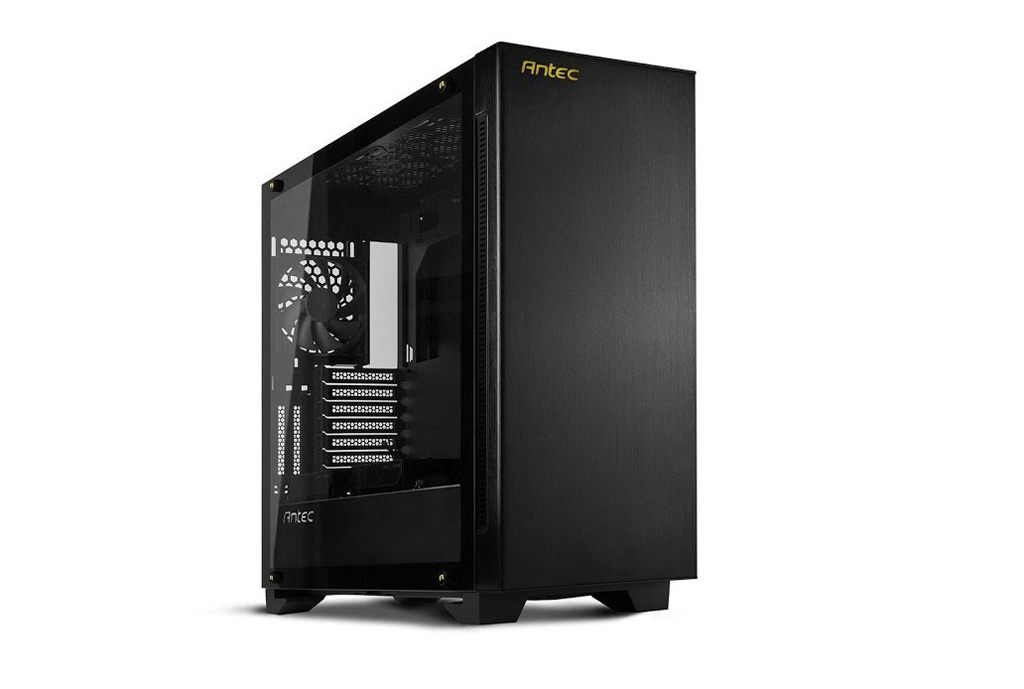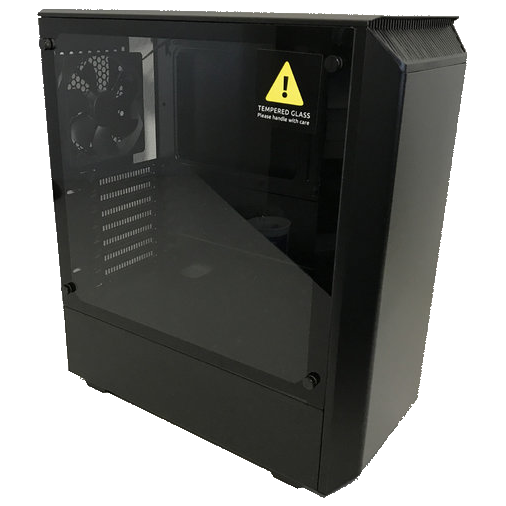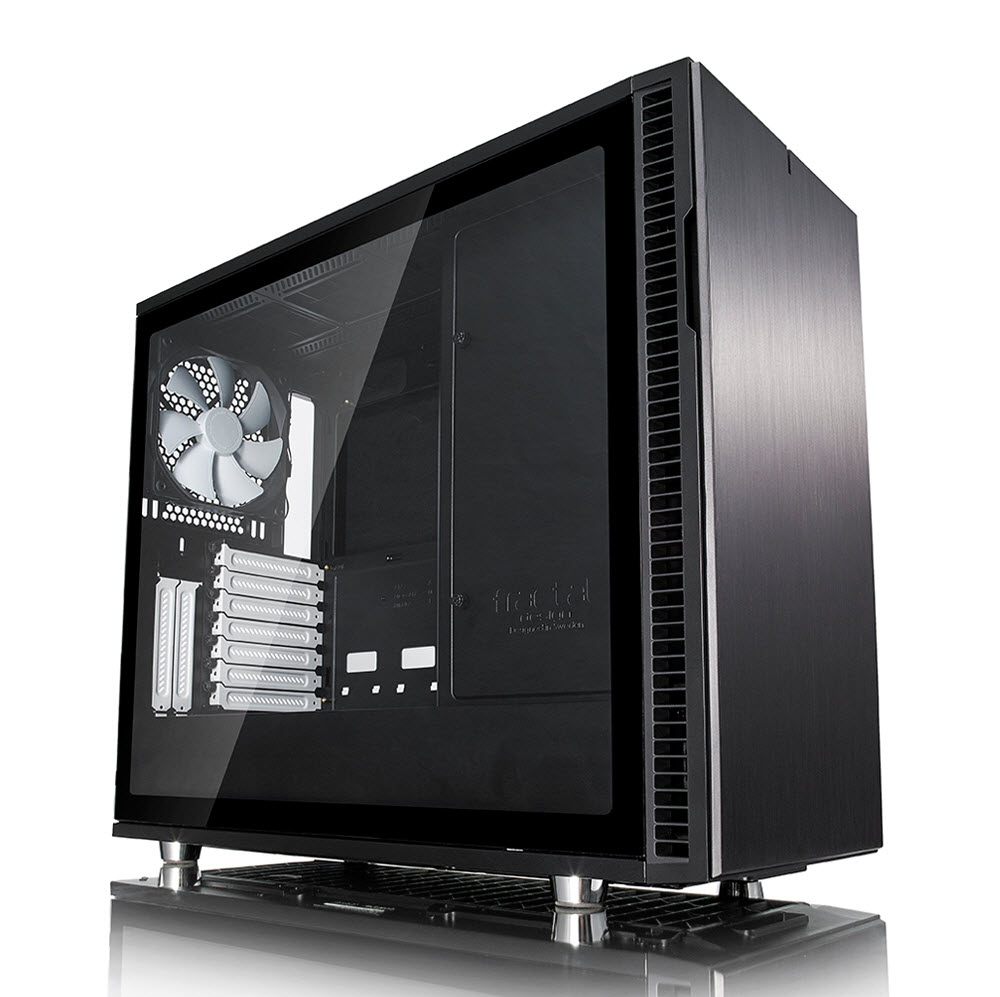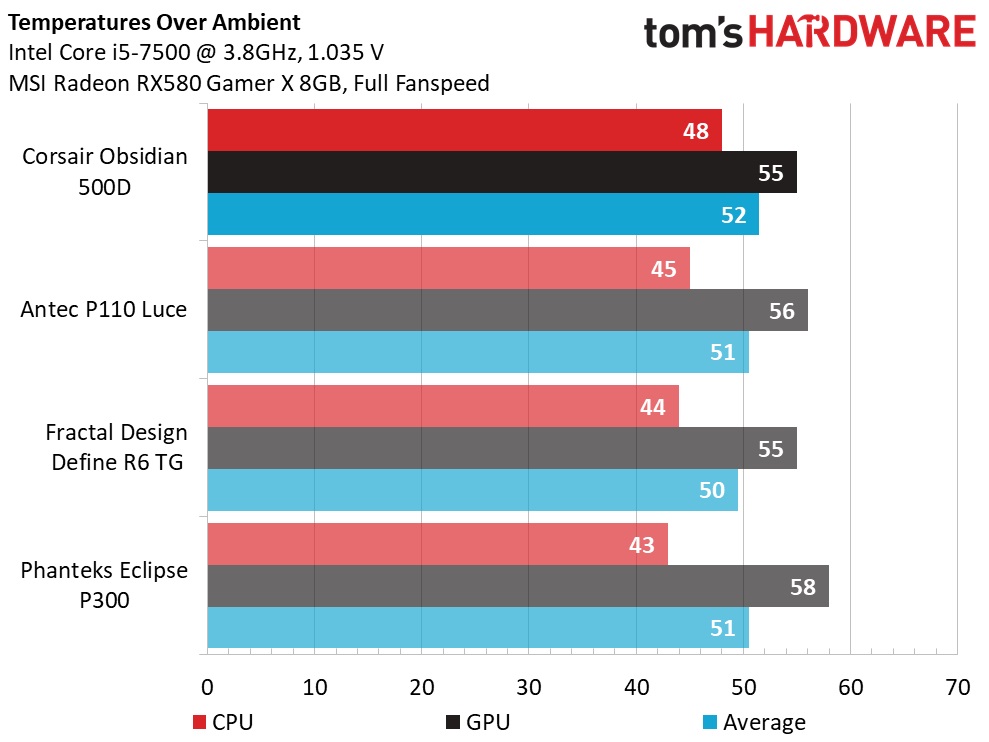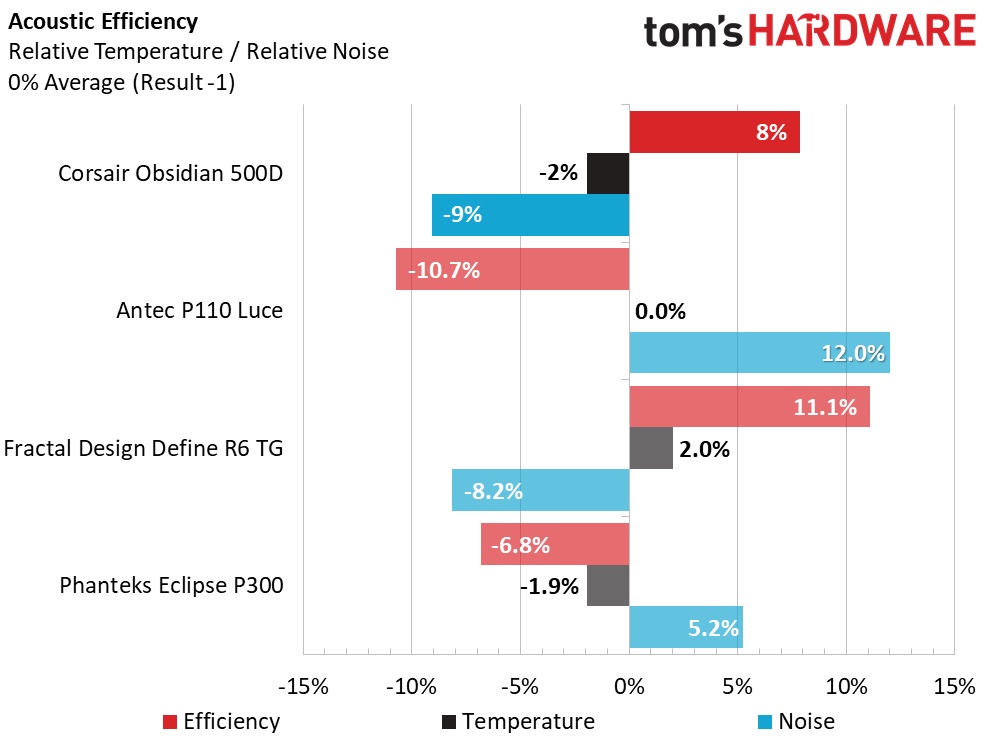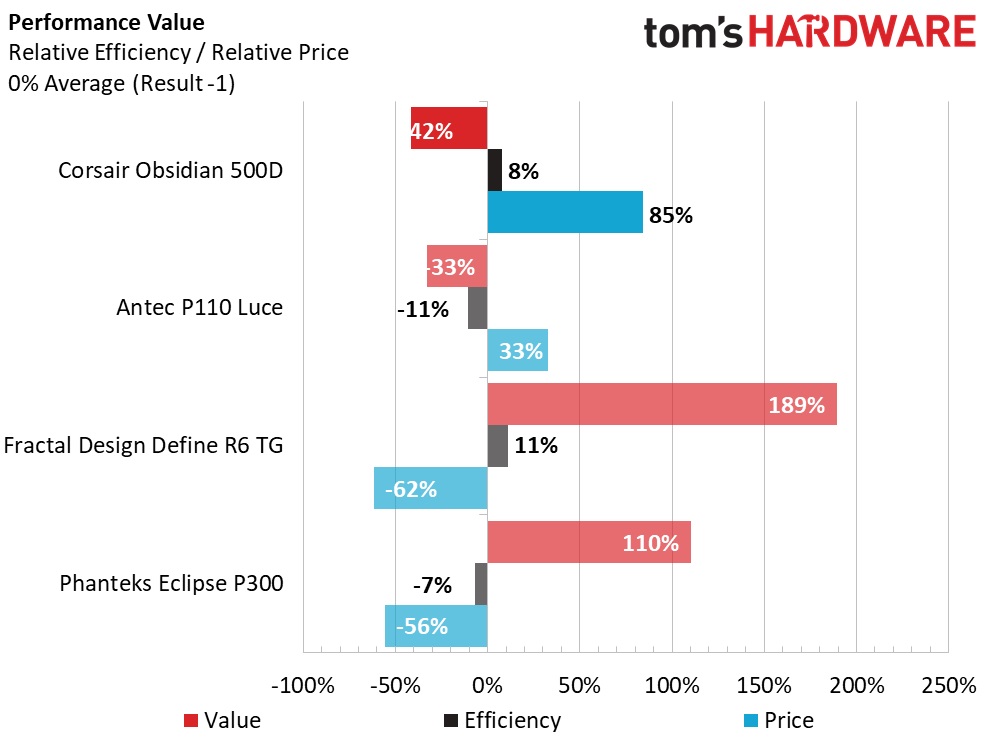Corsair Obsidian Series 500D Mid-Tower Case Review
Why you can trust Tom's Hardware
Benchmarks & Final Review
We are using the Antec P110 Luce, the Phanteks Eclipse P300, and the Fractal Design Define R6 TG chassis for comparison with our Corsair test unit. They are of similar size and features, and all have tempered-glass side panels.
Given that this chassis is equipped with two tempered-glass side panels and a single intake fan, we aren't expecting world-class cooling performance. The two 120mm fans included from the factory (one intake, one exhaust) turned in better-than-expected performance when it came to cooling our system components. But, in the grand scheme of things, that really isn't saying much. Overall, thermal performance was lacking, and it is obvious that anyone running multiple GPUs or an overclocked system would benefit from the addition of one or more 120mm intake fans. Given the $150 asking price, we would have liked to have seen at least two intake fans included by default.
Our budget quad-core Core i5-7500 processor, running at 3.8GHz, peaked at 48°C over the ambient temperature of 25°C. As stated, those of you running high-end hardware or who plan on overclocking your system will no doubt want to add more fans or opt for a custom water-cooling loop or an all-in-one cooler. At 55°C over the ambient room temperature, our GPU temperatures performed on par with our comparison systems, due in large part to the proximity and position of the 120mm intake fan.
We took sound-level readings with two off-the-shelf dB meters from two different angles. Thanks to two full-cover tempered-glass side panels and two 120mm fans, the Obsidian 500D registered just over 28dB at idle and 31dB under load. These numbers are on par with the Fractal Design Define R6 TG, as well as the be quiet! Dark Base 700 (the latter not charted here).
Determining acoustic efficiency, also referred to as "cooling-to-noise ratio," is a matter of averaging all five of our tests to determine a base value.
Even though our performance value charts do not take high-end features or production quality into account, at $150, the Obsidian 500D is a bit overpriced when compared to the other cases in its class on this raw measure. Those of you that desire a premium mid-tower ATX chassis, and for whom cost is not an option, should obviously ignore this chart. Budget-conscious shoppers, on the other hand, might use this chart to justify opting for a lower-cost option, such as the Fractal Design Define R6 Tempered Glass Edition case.
Bottom Line
Get Tom's Hardware's best news and in-depth reviews, straight to your inbox.
The Corsair Obsidian 500D's sleek and elegant styling, high-quality fit and finish, and premium components (aluminum panels, hinged tempered-glass side panels), all come together in a highly attractive chassis. And when it comes to functionality, the Obsidian 500D is a very builder-friendly chassis, with removable magnetic fan filters, the slide out fan/radiator bracket, and its lift-off side panels. Just know that you'll likely want to factor in the cost of an extra fan or two if your config will go much beyond basic.
MORE: Best Cases
MORE: All Case Content
Steven Lynch is a contributor for Tom’s Hardware, primarily covering case reviews and news.
-
Ionlydothis I don't understand why everyone blows smoke up Corsair's butt when they release anything. Most of it is good but this is categorically not. It's lacking a ton of features, opting for less is more when you can have less while having more as an option. This case is ugly as sin when it's not a glamor shot, about the only honest thing about this review are the pictures that highlight its real world ugliness.Reply
Worst of all, this is a $80, tops, case being sold for $150... Yeah. Time to leave this site if this mindlessness continues... -
Lucky_SLS A different opinion here : I do like the 500D, but I will agree with you that the 250 buck all tempered glass version looks ugly. This 500D got the perfect mix of glass and metal. Doesn't look too gaudy and yet has some flare.Reply
You won't find brushed aluminium inserts and panels along with custom loop friendly design in an 80 buck case. Most 80 buck cases won't even have the clearance for push pull front rad with a full length gpu. Not to mention easy rad mountings and dust filters all around. Maybe 150 is a bit steep, expect that to come down to 120 in a month or two. -
Olle P Just looking at this case says cooling isn't up to snuff...Reply
■ The fans provided could have been omitted in the first place. Any "premium" user will pick his own fans anyway.■ The ground clearance isn't enough to provide the PSU with any significant amount of air.■ The two slots in the front are not enough to provide intake air for the front fans. (Unless running a low power computer.)■ Is there any cooling at all for the HDDs?■ PSU dust filter removable only rearwards...This case seems best suited for a quiet low power rig pulling <100W total peak while relying on external storage.
Then a couple of 300 rpm fans will do nicely! -
berezini.2013 I would have liked to see bulky cases with no windows and soundproofed. Maybe one placed in a muffler like a maze with sound dampening so you get no noise coming off it for clear and crisp immersion during vr or intense horror moments with no background fan noiseReply
